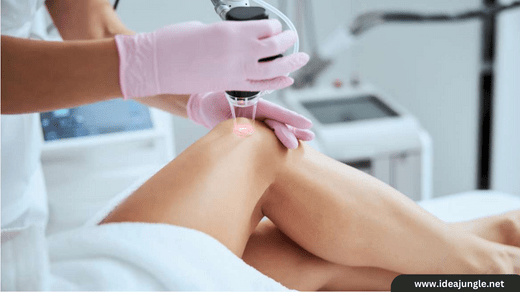Spider veins can be a cosmetic concern for many individuals. These tiny blood vessels that appear close to the skin’s surface can be a source of self-consciousness and discomfort. If you’re looking for effective ways to remove spider veins in Las Vegas, this article is for you. In this comprehensive guide, we will discuss the causes, symptoms, diagnosis, treatment options, and aftercare involved in spider vein removal. By the end of this article, you’ll have a better understanding of how to tackle this common issue.
Spider veins are small, dilated blood vessels that can be seen on the surface of the skin. They often appear as red, blue, or purple lines or webs, resembling spider legs, hence the name. While spider veins are typically harmless, they can cause itchiness, aching, and discomfort in some individuals. Additionally, many people seek treatment for spider veins due to cosmetic reasons.
What are Spider Veins?
Spider veins, medically known as telangiectasias, are similar to varicose veins but smaller in size. They occur when the valves within the veins weaken or become damaged, causing blood to pool and veins to dilate. Spider veins can be caused by various factors, including genetics, hormonal changes, prolonged standing or sitting, obesity, and certain medical conditions. Understanding the causes can help individuals take preventive measures to reduce their risk of developing spider veins.
Causes of Spider Veins
- Genetic predisposition
- Hormonal changes (e.g., pregnancy, menopause)
- Prolonged periods of standing or sitting
- Obesity and excess weight
- Injury or trauma to the skin
- Aging and natural wear and tear on veins
Symptoms and Diagnosis
Spider veins are primarily a cosmetic concern, but they can cause uncomfortable symptoms for some individuals. Common symptoms include:
- Itching or burning sensation around the affected area
- Aching or throbbing in the legs
- Restlessness or heaviness in the legs
- Skin redness or discoloration
If you suspect you have spider veins, it’s important to consult with a healthcare professional or a vein specialist. They will conduct a thorough examination and may recommend additional tests, such as an ultrasound, to determine the extent of the problem and rule out any underlying conditions.
Treatment Options
Fortunately, several effective treatment options are available for spider vein removal. The choice of treatment depends on the severity of the condition and the individual’s preferences. Some common treatment options include:
Sclerotherapy
Sclerotherapy is one of the most popular and effective treatments for spider veins. During this procedure, a solution is injected directly into the affected veins, causing them to collapse and fade over time. Sclerotherapy is a minimally invasive procedure that can be performed in a doctor’s office without the need for anesthesia.
Laser Treatment
Laser treatment, also known as laser therapy or endovenous laser ablation, is another non-surgical option for spider vein removal. It involves using laser energy to target and destroy the affected veins. Laser treatment is often recommended for smaller spider veins close to the skin’s surface and may require multiple sessions for optimal results.
Other Treatments
In addition to sclerotherapy and laser treatment, other options may be considered based on individual circumstances. These include:
- Radiofrequency ablation
- Vein stripping and ligation
- Ambulatory phlebectomy
It’s crucial to consult with a qualified healthcare professional or a vein specialist to determine the most suitable treatment option for your specific needs.
Preparing for Spider Vein Removal
Before undergoing spider vein removal treatment, it’s essential to follow specific guidelines provided by your healthcare professional. These guidelines may include:
- Avoiding certain medications or supplements that can increase the risk of bleeding
- Wearing loose and comfortable clothing on the day of the procedure
- Arranging for transportation to and from the treatment facility, if necessary
By following these instructions, you can ensure a smooth and successful spider vein removal procedure.
Recovery and Aftercare
After spider vein removal treatment, it’s important to follow the aftercare instructions provided by your healthcare professional. This may include:
- Wearing compression stockings to support healing and prevent blood clots
- Avoiding strenuous activities and heavy lifting for a specific period
- Keeping the treated area clean and moisturized
- Avoiding prolonged exposure to sunlight and using sunscreen when necessary
Following the recommended aftercare practices will promote proper healing and enhance the results of the treatment.
Prevention and Maintenance
While spider veins cannot always be prevented, certain lifestyle changes can help reduce the risk of developing new ones. Here are some preventive measures and maintenance tips:
- Regular exercise to promote good circulation
- Maintaining a healthy weight and avoiding excessive weight gain
- Avoiding prolonged periods of standing or sitting
- Elevating your legs whenever possible
- Wearing compression stockings, especially during long flights or car journeys
By incorporating these practices into your daily routine, you can minimize the chances of developing new spider veins in the future.
Spider veins can be a bothersome condition, but with the right knowledge and appropriate treatment, they can be effectively addressed. Whether you opt for sclerotherapy, laser treatment, or other available options, consulting with a qualified healthcare professional or a vein specialist is crucial. By taking preventive measures and following aftercare guidelines, you can achieve smoother, clearer skin and regain your confidence.

